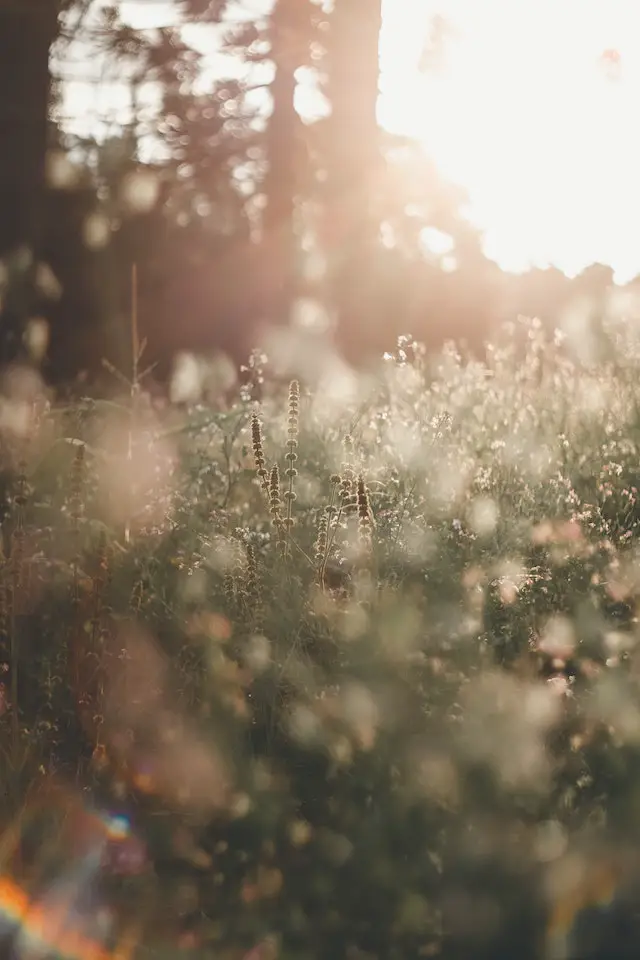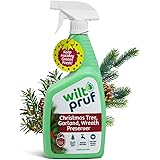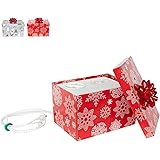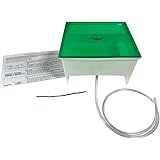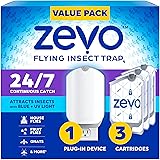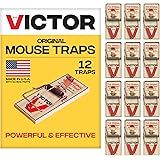Looking to maintain a vibrant and beautiful wildflower garden? One common challenge is keeping grass from encroaching on your delicate blooms. But fear not, because I have a solution for you! In this article, we’ll explore effective techniques on how to keep grass out of wildflowers, ensuring that your garden remains a flourishing haven for these stunning plants.
So, if you’ve been wondering how to preserve the purity and charm of your wildflower display, you’ve come to the right place. Let’s dive in!
How to Keep Grass Out of Wildflowers
Wildflowers are a beautiful addition to any garden or natural landscape. Their vibrant colors and delicate petals can brighten up any space. However, one challenge that many gardeners face when growing wildflowers is keeping grass from infiltrating the flower beds.
Grass can quickly overtake wildflowers, stealing nutrients and sunlight and hindering their growth. In this guide, we will explore several effective strategies to keep grass out of wildflowers and help you maintain a thriving and beautiful wildflower garden.
1. Clear the Area
Before planting your wildflowers, it’s crucial to prepare the area properly to minimize the chances of grass invasion. Follow these steps:
- Identify the area where you plan to grow your wildflowers.
- Remove any existing grass or plant cover within the designated area.
- Use a shovel or garden fork to dig out the grass, ensuring that you remove the root system to prevent regrowth.
- Clear the area of any debris, rocks, or other obstructions that may impede the growth of your wildflowers.
- Rake the soil to create a smooth and uniform surface.
By starting with a clean slate, you provide your wildflowers with the best possible chance of thriving without competition from grass.
2. Use Landscape Fabric or Weed Barrier
To further prevent grass from infiltrating your wildflower beds, consider using landscape fabric or a weed barrier. These materials provide an additional layer of protection by creating a physical barrier between the soil and the grass. Here’s how to use them effectively:
- Measure the area where you plan to grow your wildflowers.
- Cut the landscape fabric or weed barrier to fit the designated area, making sure to leave some excess material around the edges.
- Place the fabric or barrier over the cleared soil, ensuring that it covers the entire area.
- Secure the edges of the fabric or barrier with garden staples or rocks to prevent it from shifting.
- Create small holes in the fabric or barrier where you want to plant your wildflowers.
- Gently insert your wildflower plants into the holes, taking care not to disturb the fabric or barrier.
- Water the wildflowers thoroughly.
Landscape fabric or weed barriers help suppress grass growth while allowing air, water, and nutrients to reach the wildflowers. Just make sure to choose a breathable fabric or barrier to promote healthy growth.
3. Apply Mulch
Mulching is another effective strategy to keep grass out of your wildflowers. Mulch acts as a protective layer, suppressing weed growth and conserving soil moisture. Follow these steps to apply mulch correctly:
- Wait until your wildflowers have grown a few inches tall before applying mulch. This allows them to establish themselves.
- Choose a suitable mulch material such as wood chips, straw, or shredded bark.
- Sprinkle a layer of mulch around the base of each wildflower plant, ensuring that you cover the surrounding soil evenly.
- Avoid piling mulch against the stems or crowns of the wildflowers, as this can lead to rot or disease.
- Leave a small gap between the mulch and the plant stems to allow for airflow.
Mulching not only helps suppress grass growth but also enhances the aesthetic appeal of your wildflower garden. Additionally, it provides insulation to the soil, keeping the wildflowers’ roots protected during extreme temperatures.
4. Regular Maintenance
Maintaining a wildflower garden requires consistent effort. By implementing regular maintenance practices, you can minimize the chances of grass infiltrating your wildflowers. Here are some tasks to consider:
4.1. Regular Weeding
Periodically inspect your wildflower beds for any signs of grass or other unwanted plants. Slightly uproot the intruding grass to prevent it from establishing a foothold. Be cautious not to disturb the wildflowers’ roots while weeding.
4.2. Proper Watering
Provide your wildflowers with adequate water to maintain their health and discourage grass growth. Water deeply but infrequently to encourage deep root growth. Avoid overhead watering, as it can encourage weed growth by distributing weed seeds.
4.3. Fertilize Wisely
Apply a balanced slow-release fertilizer to your wildflowers according to the manufacturer’s instructions. Avoid over-fertilizing, as excessive nutrients can promote grass growth. Be sure to choose a fertilizer specifically formulated for wildflowers.
4.4. Regular Inspections
Regularly inspect your wildflower beds for signs of grass encroachment or any other issues. Catching and addressing problems early on can prevent them from escalating and damaging your wildflowers.
5. Select Grass-Free Wildflowers
Choosing grass-free wildflower varieties can also help in your battle against grass infiltration. Some wildflower species are less susceptible to grass competition and can outcompete it more effectively. Consider including the following grass-free wildflowers in your garden:
- Black-eyed Susan (Rudbeckia hirta)
- Blanketflower (Gaillardia spp.)
- Butterflyweed (Asclepias tuberosa)
- Coreopsis (Coreopsis spp.)
- Indian Blanket (Gaillardia pulchella)
- Purple Coneflower (Echinacea purpurea)
By selecting wildflower species known for their resilience against grass competition, you increase the chances of a successful and grass-free wildflower garden.
Maintaining a wildflower garden can be a rewarding experience, but keeping grass out of wildflowers requires proactive measures. By following the strategies outlined in this guide, including proper site preparation, using landscape fabric or weed barriers, applying mulch, practicing regular maintenance, and selecting grass-free wildflower varieties, you can create a thriving and grass-free wildflower garden.
With a little effort and attention, you can enjoy the vibrant beauty of wildflowers in a weed-free environment.
FAQ: Managing Grass and Weeds in Your Wildflower Garden and Flower Beds
To remove grass from your wildflower garden, you can use several methods:
Hand pulling: Gently uproot grass by hand, being careful not to disturb the wildflowers.
Mulching: Apply a thick layer of organic mulch like wood chips or cardboard to smother the grass.
Herbicides: Use a selective herbicide designed to target grass without harming wildflowers. Follow the instructions carefully.
Selective herbicides, such as grass-specific herbicides, can kill grass while sparing wildflowers. Always read and follow the product label for safe and effective use.
Weed prevention methods for wildflower gardens include:
Regular weeding: Hand-pull weeds as they appear to prevent them from taking over.
Mulching: Apply mulch to suppress weed growth.
Proper spacing: Plant wildflowers densely to minimize space for weeds to grow.
Landscape fabric: Use weed barrier fabric to prevent weeds from emerging.
In some cases, wildflowers can compete with grass and eventually reduce its growth. However, this depends on the types of wildflowers and grasses in your garden and their specific growth characteristics.
To remove grass and weeds from flower beds:
Hand weeding: Carefully pull out grass and weeds by the root.
Mulching: Apply mulch to block weed growth.
Herbicides: Use a selective herbicide that targets grass and broadleaf weeds, following the label instructions.
Use a barrier or edging material to separate the flower bed from the lawn. Regularly trim along the edge to prevent grass from encroaching.
Some natural methods to kill grass include:
Solarization: Cover the area with clear plastic to heat and kill the grass through sunlight and heat.
Vinegar: Applying vinegar can also kill grass but be cautious as it can affect nearby plants.
Permanently removing grass may require a combination of methods, including:
Sheet mulching: Layer cardboard or newspaper over the grass and cover it with soil or mulch.
Repeated cultivation: Continuously remove grass as it regrows until it weakens.
Herbicides: Use non-selective herbicides to kill all vegetation, then replant with desired plants.
The quickest way to remove grass and weeds is to use a non-selective herbicide, but this may not be suitable for all situations.
Other quick methods include sheet mulching or manual removal with the help of garden tools. Be sure to follow safety guidelines when using herbicides.
Final Thoughts
To keep grass from encroaching on wildflower beds, there are several effective strategies to employ. Firstly, regular weeding is crucial to remove any grass that may have found its way into the wildflower patch. Secondly, creating physical barriers such as edging or mulching can help prevent grass from spreading.
Additionally, planting densely and selecting taller wildflowers can make it difficult for grass to establish and thrive. Lastly, mowing the surrounding grass on a regular basis can deter its growth into the wildflower area. By implementing these practices, gardeners can maintain weed-free and flourishing wildflower beds.
Auto Amazon Links: No products found.
Wilt-Pruf® Christmas Tree/Cutting Preserver Spray |Preserves Christmas Trees, Wreaths, Garlands, Cuttings and Carved Pumpkins | Reduces Needle Drop | Keeps Cut Trees Fresh Longer | Natural (32 oz)
$21.99 (as of November 21, 2025 22:30 GMT +00:00 - More info- Product prices and availability are accurate as of the date/time indicated and are subject to change. Any price and availability information displayed on [relevant Amazon Site(s), as applicable] at the time of purchase will apply to the purchase of this product.
Perfect Plants Christmas Tree Saver 8oz. | Easy Use Xmas Tree Preserver Food | Have Healthy Green Christmas Trees All Holiday Season
$9.97 (as of November 21, 2025 22:30 GMT +00:00 - More info- Product prices and availability are accurate as of the date/time indicated and are subject to change. Any price and availability information displayed on [relevant Amazon Site(s), as applicable] at the time of purchase will apply to the purchase of this product.
HoHoHoH2o Automatic Christmas Tree Watering System Device, Santa’s Tree Helper Keeps Your Christmas Tree Healthy and Fresh, Refillable 2.5 gallons Capacity Box - Red/Snowflakes
$99.95 (as of November 21, 2025 22:30 GMT +00:00 - More info- Product prices and availability are accurate as of the date/time indicated and are subject to change. Any price and availability information displayed on [relevant Amazon Site(s), as applicable] at the time of purchase will apply to the purchase of this product.
Santa's Tree Helper Automatic Christmas Tree Watering System with Enhanced Liner, Waterer Disguised as a Present/Gift Box - Blends in with Christmas Ornaments and Presents
$27.99 (as of November 21, 2025 22:30 GMT +00:00 - More info- Product prices and availability are accurate as of the date/time indicated and are subject to change. Any price and availability information displayed on [relevant Amazon Site(s), as applicable] at the time of purchase will apply to the purchase of this product.
Automatic Christmas Tree Watering System | Reduce Needle Loss | Never Have a Dry Stand | Evergreen Helper® | US Patent 12,102,249
$28.49 (as of November 21, 2025 22:30 GMT +00:00 - More info- Product prices and availability are accurate as of the date/time indicated and are subject to change. Any price and availability information displayed on [relevant Amazon Site(s), as applicable] at the time of purchase will apply to the purchase of this product.
Zevo Flying Insect Trap Official Refill Cartridges - Fits Both Zevo Trap & MAX Indoor Fly Trap - Authentic Trap+Lock Technology to Catch Gnats, House & Fruit Flys (4 Official Refill Cartridges)
$14.97 (as of November 22, 2025 12:57 GMT +00:00 - More info- Product prices and availability are accurate as of the date/time indicated and are subject to change. Any price and availability information displayed on [relevant Amazon Site(s), as applicable] at the time of purchase will apply to the purchase of this product.
TERRO Ant Killer Bait Stations T300B - Liquid Bait to Eliminate Ants - Bait System - 12 Count Stations for Effective Indoor Ant Control
$10.88 (as of November 22, 2025 12:57 GMT +00:00 - More info- Product prices and availability are accurate as of the date/time indicated and are subject to change. Any price and availability information displayed on [relevant Amazon Site(s), as applicable] at the time of purchase will apply to the purchase of this product.
Zevo Flying Insect Trap & 3 Refill Cartridges - Plug in Fly Trap & Indoor Bug Catcher for Gnats, House & Fruit Flies - Blue & UV Light Technology, Mess-Free Alternative to Bug Zapper
$25.96 (as of November 22, 2025 12:57 GMT +00:00 - More info- Product prices and availability are accurate as of the date/time indicated and are subject to change. Any price and availability information displayed on [relevant Amazon Site(s), as applicable] at the time of purchase will apply to the purchase of this product.
TERRO Fruit Fly Traps for Indoors (4 Pack) + 180 Days of Lure Supply
$10.95 (as of November 22, 2025 12:57 GMT +00:00 - More info- Product prices and availability are accurate as of the date/time indicated and are subject to change. Any price and availability information displayed on [relevant Amazon Site(s), as applicable] at the time of purchase will apply to the purchase of this product.
Victor Mouse Traps M150-12, Metal Pedal, Sustainably Sourced FSC Wood, Wooden Mouse Traps, 12 Metal Pedal Traps
$9.79 (as of November 22, 2025 12:57 GMT +00:00 - More info- Product prices and availability are accurate as of the date/time indicated and are subject to change. Any price and availability information displayed on [relevant Amazon Site(s), as applicable] at the time of purchase will apply to the purchase of this product.

